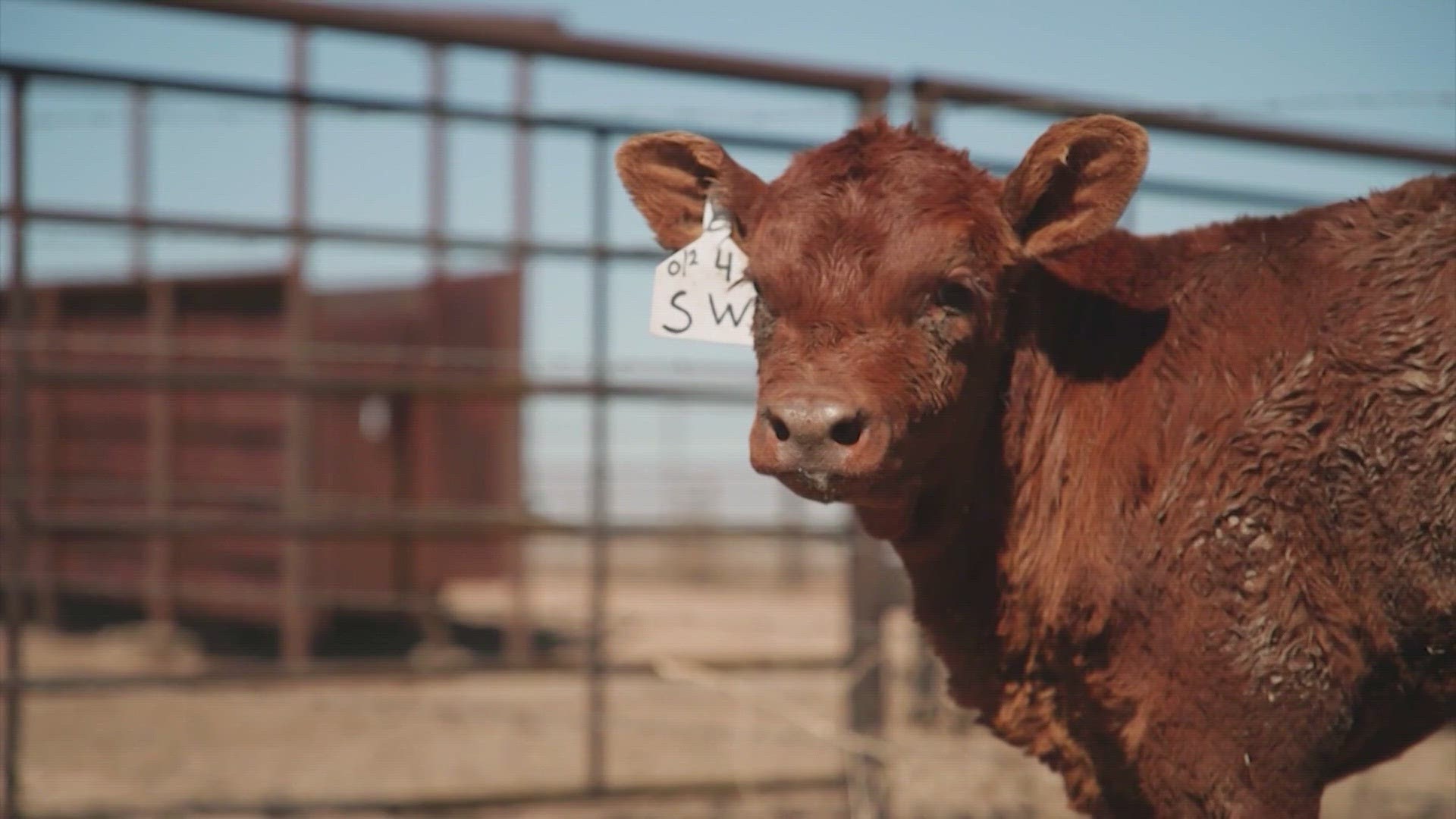CANADIAN, Texas — For more than 20 years, Shane Pennington has managed a ranch near the town of Canadian, Texas.
When the Smokehouse Creek Fire approached the ranch, he and his wife rushed to safety before he could safely relocate more than 300 cattle he cared for.
It’s the loss of animals that has made the state’s largest wildfire on record so painful for Pennington. When he returned to the ranch, he found more than 50 dead cattle.
“It’s tough. We’ve raised a bunch of these from babies,” Pennington said. “It’s just all charred and burned.
Monday, Pennington was on horseback as he continued the search for surviving cattle.
Pennington and other ranchers find themselves in a difficult situation. If their cattle survived, they may likely have to be euthanized.
“If their udders burned, they won’t be able to nurse. A lot of them, their feet are burned. It blinded a bunch of them. They can’t see, and they’re just walking looking for water and food. We put a bunch of those down, and its pretty devastating,” Pennington said. “It’s just hard to put them down when your job is basically to keep them alive.”
The Smokehouse Creek Fire, which is among 5 active fires in the panhandle, was 15% contained Monday afternoon. The Texas A&M Forest Service, which is tasked with investigating the Smokehouse Creek Fire, hasn't determined what exactly caused it.
Food and water on the Panhandle are scarce, creating serious challenges for ranchers looking to keep their surviving cattle alive. In addition, Miller said 120 miles of power lines are down in the panhandle. Those power lines feed water pumps and provide electricity to surrounding areas in order to provide water for cattle.
According to Texas Agriculture Commissioner Sid Miller, a preliminary count estimates 3,000 head of cattle died in the fires. Miller said the estimated number is low, and he anticipates the number could triple in the days to come.
The damage and loss of livestock are a threat for the state’s agriculture economy, Texas Farm Bureau Communications Director Gary Joiner said.
According to Miller, 85% of the state’s cattle are on land in the Panhandle.
“It’s very devastating,” Miller said. “Cows are worth about $3,000 a piece. When you have a couple hundred of those gone, it’s a pretty stressful time.”
Joiner said a full recovery could take several years. It comes during a time when demand for meat products exceed supply.
“Beef inventory, in terms of cattle on the land right now, was at a 73-year low before the fire,” Joiner said.
Joiner said he doesn’t anticipate a rise in meat prices in the short-term, but the industry could face challenges long-term.
“Crisis’ is the word that describes it well,” Joiner said. “Wildfires in the Panhandle happen, but not at this scale or intensity. The rancher's desire right now is to emergency feed their livestock.”
The Texas Farm Bureau has set up the Panhandle Wildfire Relief Fund, all donations made to the fund will go directly to farmers and ranchers affected by the fires. Funding will be provided to ranchers and farmers based on actual losses incurred.
Ranchers and farmers struggling with mental health issues are encouraged to seek help from the AgriStress Helpline by calling (833) 897-2474.

